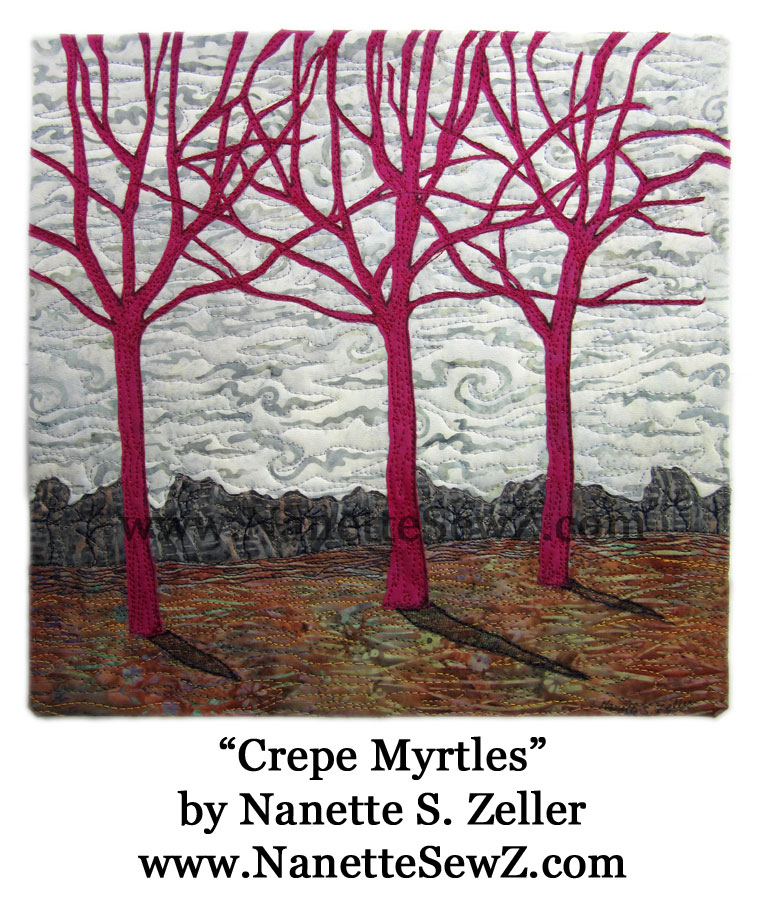I’m trying to get into the swing of things. In some respects, it seems like I’m just playing around. T he last couple of weeks I’ve been working on smaller pieces that had other purposes. I have to keep reminding myself that I’m not wasting time.
he last couple of weeks I’ve been working on smaller pieces that had other purposes. I have to keep reminding myself that I’m not wasting time.
A friend of mine told me how she always made a smaller version of her work before she tackled the bigger quilts. For most of my projects, the components can get very small, even on a large scale art quilt. I couldn’t imagine rendering the image down smaller than they already are. The pieces would just be too teeny to work with.
The pieces I’ve “played” with the last couple weeks are like technique snapshots. I am experimenting with different techniques to see how the process would work on a larger scale. Happily, I have had several “ah-ha” moments.
It’s always kind of scary to make art using cloth. In the early stages of development, you can rip things out and start over. But, as you add more and more layers of fabrics and thread, the point of no return becomes really obvious. Painters can scrap an entire canvas by slapping a coat of gesso on it, then start over. Textile artists don’t have that luxury, the materials are usually lost. If we’re lucky they can be re-purposed, but frequently they’re only worthy of the trash. Starting over is also risky because you may not have any more of the precious “sky” fabric that worked so well the first round. We must do every thing we can to avoid disaster, because there’s no going back.
That’s why, testing out a technique is important. If I can get a technique down on a small project, it makes my attempts on the big project more likely to succeed.
Last week, I explained one experiment I had with the Cameo Silhouette. While working through that process, I created a piece called “Crepe Myrtles” (click here to read about the process). I sent it to SAQA (Studio Art Quilt Associates — www.saqa.com ) this week to use for their annual benefit auction (fyi- you’ll be able to bid on it this fall). You see, I wasn’t wasting time. I was learning and exercising my creative muscles. And in the end, it’s a win-win process for me, SAQA and maybe you if you plan to bid on it.
One thought on “It’s a win-win process”